UTSW quality and research forum reveals the latest in simulation training
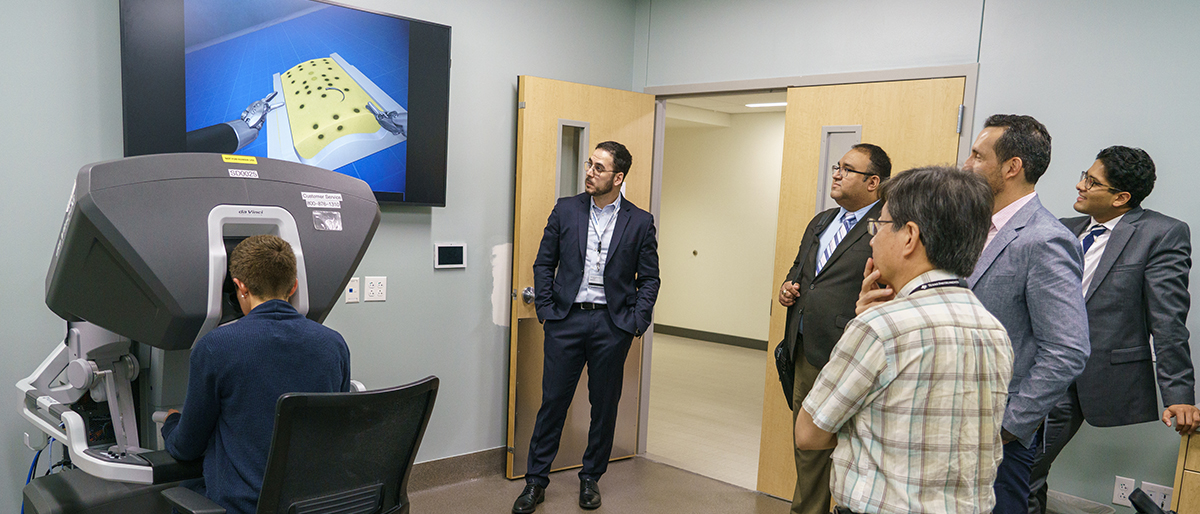
Hundreds of participants locally and from around the world attended UT Southwestern’s sixth annual forum showcasing its Simulation Center, which allows students, faculty, and other learners to practice procedures, skills, and teamwork exercises using sophisticated lifelike manikins and other beneficial technologies.
The Center, which opened in 2018, provides a variety of models such as ones that mimic a woman giving birth and others involving stages of surgery or medical procedures, complete with mock heart rates and other metrics.
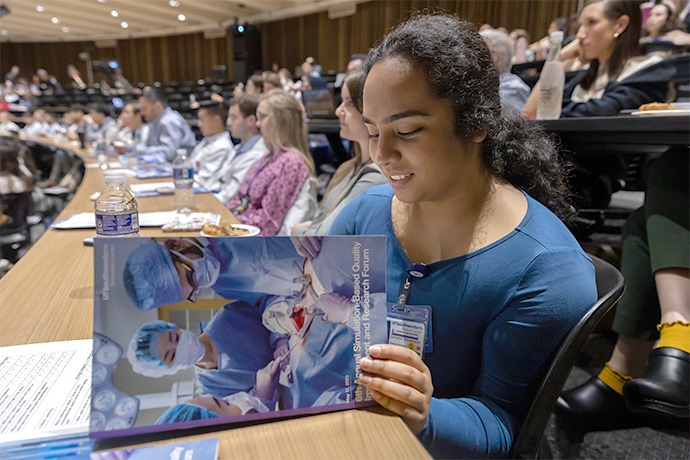
The sixth annual Simulation-Based Quality Improvement and Research Forum was held May 17 in a McDermott Lecture Hall on South Campus, then moved to the nearby Sim Center in the afternoon. It took place virtually and – for the first time since the COVID-19 pandemic began in 2020 – in person as well. Physicians, nurses, and other health care professionals were able to earn continuing education credit at the event, which included a keynote address, panel discussions, and research presentations.
“The level of simulation science being pursued by investigators at UT Southwestern is truly impressive and continues to foster collaborations that impact our training, research, and patient care missions,” said Daniel Scott, M.D., Assistant Dean of Simulation and Student Integration and Director of the Simulation Center.
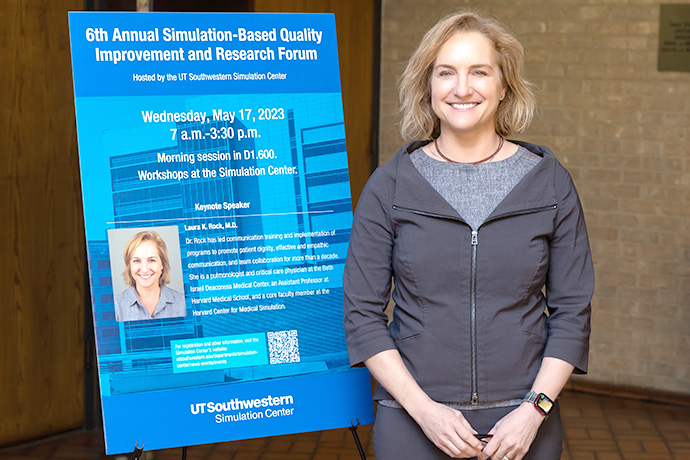
“The ongoing contributions of our simulation center have made a profound impact on our training and quality improvement initiatives, benefiting not only our dedicated health care professionals, but also our patients,” added Krystle Campbell, D.H.A., M.S., CHSE, FACHDM, Director of Operations at the Simulation Center. It provides a way for health care learners to gain experience with technical and nontechnical skills, like suturing, delivering “babies,” discussing options with family members, and performing surgeries, without putting patients at risk, she said.
Laura K. Rock, M.D., a pulmonologist and critical care physician at the Beth Israel Deaconess Medical Center, gave the keynote address, “Simulation, Debriefing, and the Art of Listening.” Dr. Rock is also an Assistant Professor at Harvard Medical School.
An expert in communication training, Dr. Rock discussed the challenges of raising issues to prevent errors in a medical environment. She advised leaders to be approachable and downplay power differences when having such conversations. All involved should be comfortable about raising sensitive issues and be assured that their voices will be heard, she said.
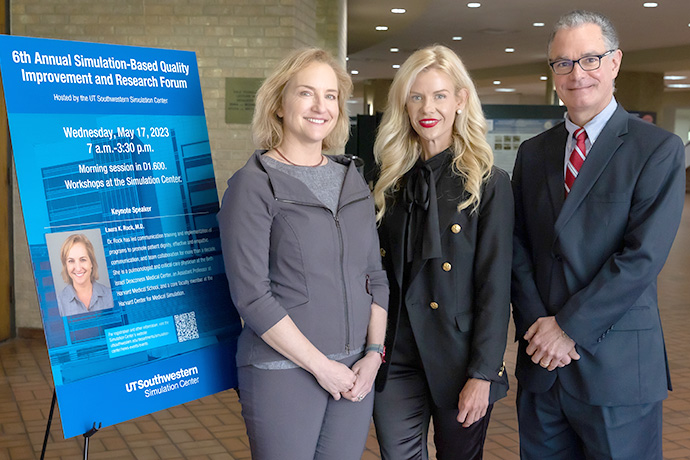
“Psychological safety is not about being nice and it’s not about feeling comfortable,” she said. Rather, Dr. Rock explained, it’s about feeling OK to say things that might make someone uncomfortable.
She also recommended holding short debriefing sessions in health care settings with the entire team – including housekeeping staff who are present – as a way to generate input that could lead to better patient outcomes.
Physicians and other medical staff need to consider how they communicate with patients, Dr. Rock added.
“Patients understand less than half of what we say,” she said. The patients of doctors who communicate effectively are more likely to adhere to medication directives, for example, Dr. Rock said, and studies show that physician communication can be improved with training.
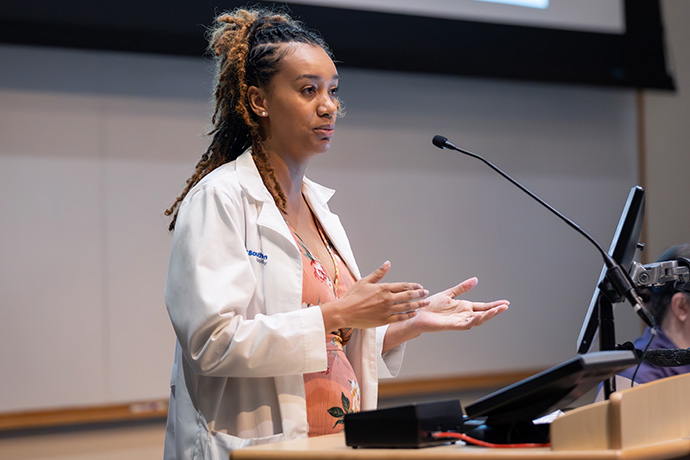
Research presenters said students rated their experiences with simulations high during the pandemic, when options to interact with actual patients were limited. Andres Abreu, M.D., a postdoctoral researcher at UT Southwestern, reported that surgeons using simulations achieved improved patient safety measures. Simulation “allows a safe environment for learning,” Dr. Abreu said.
The ability to practice a skill without risk to a patient is especially important, noted Alexis Desir, M.D., a Clinical Fellow at UT Southwestern. For example, repairing a diaphragmatic hernia has a long learning curve, with 50 to 300 procedures required to reach full mastery; however, few if any residents are likely to encounter that many actual procedures during training, Dr. Desir said. Simulators can evaluate the surgeon’s expertise, showing who needs more practice, and provide a safe opportunity for training, she said.
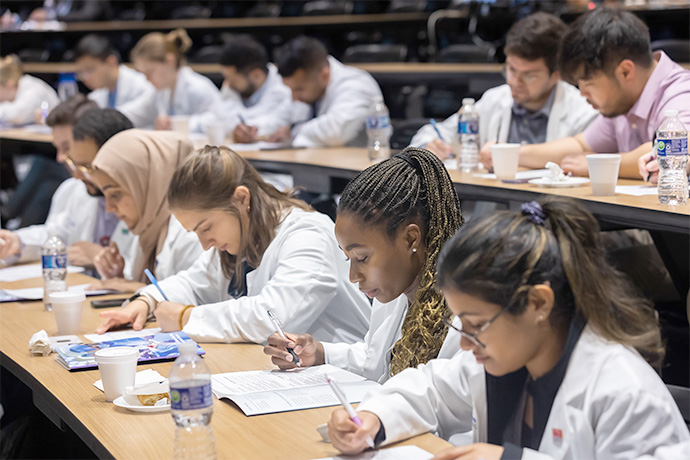
In the afternoon, forum participants toured the Simulation Center, where interactive workshops allowed groups to discuss key components of simulations for communication, graduate medical education, and task training, including use of robotics.
Among those watching one training session involving suturing was first-year UTSW medical student Kaustubh Gopal, who aspires to become a surgeon. “That’s pretty far down the road,” he said of his career goal. “But,” he added of the training and technology he learned about that day, “This is awesome.”
Dr. Scott holds the Frank H. Kidd, Jr., M.D. Distinguished Professorship in Surgery.

